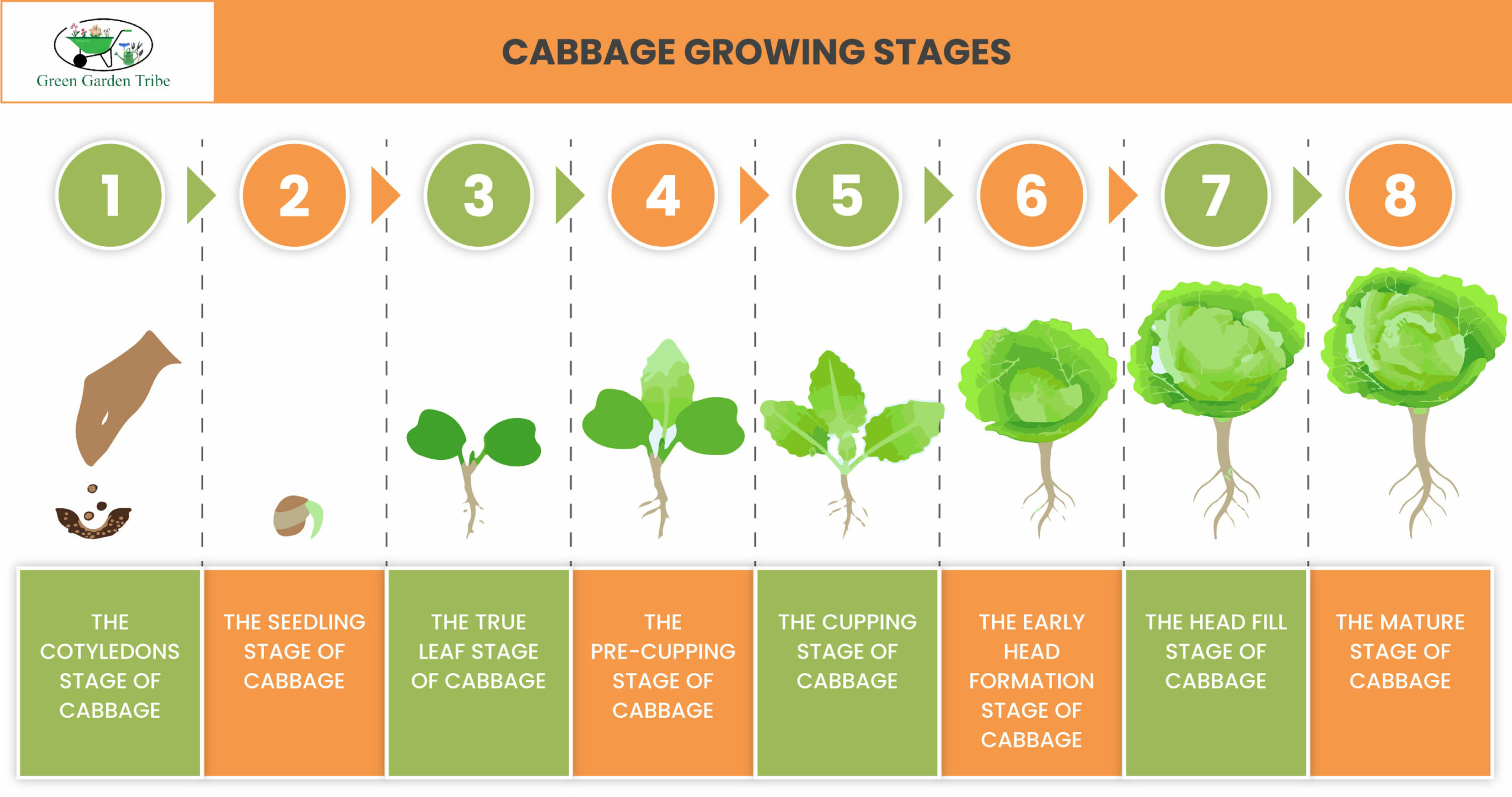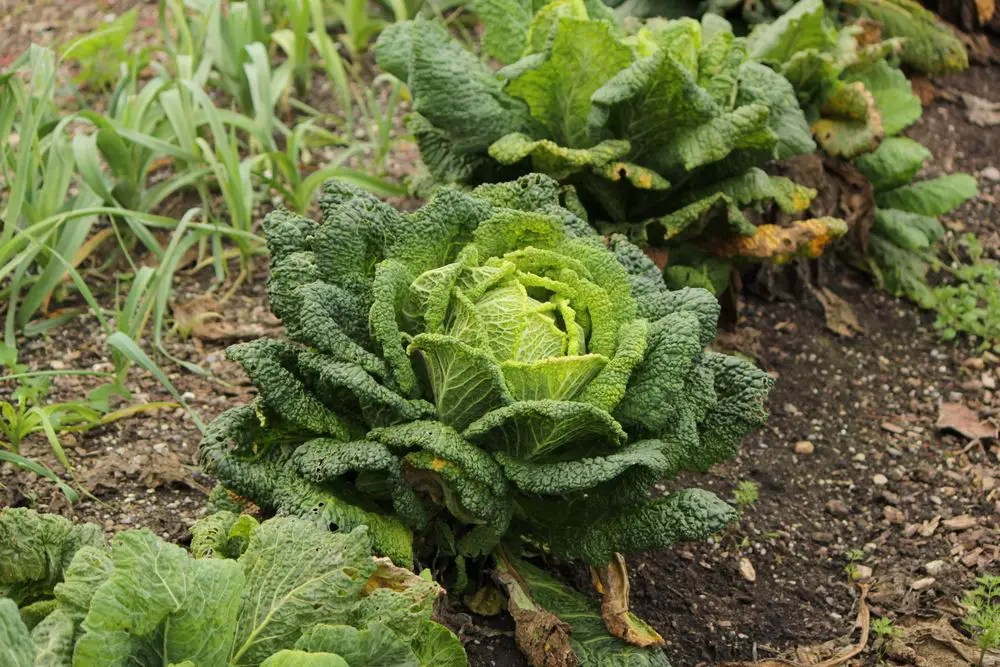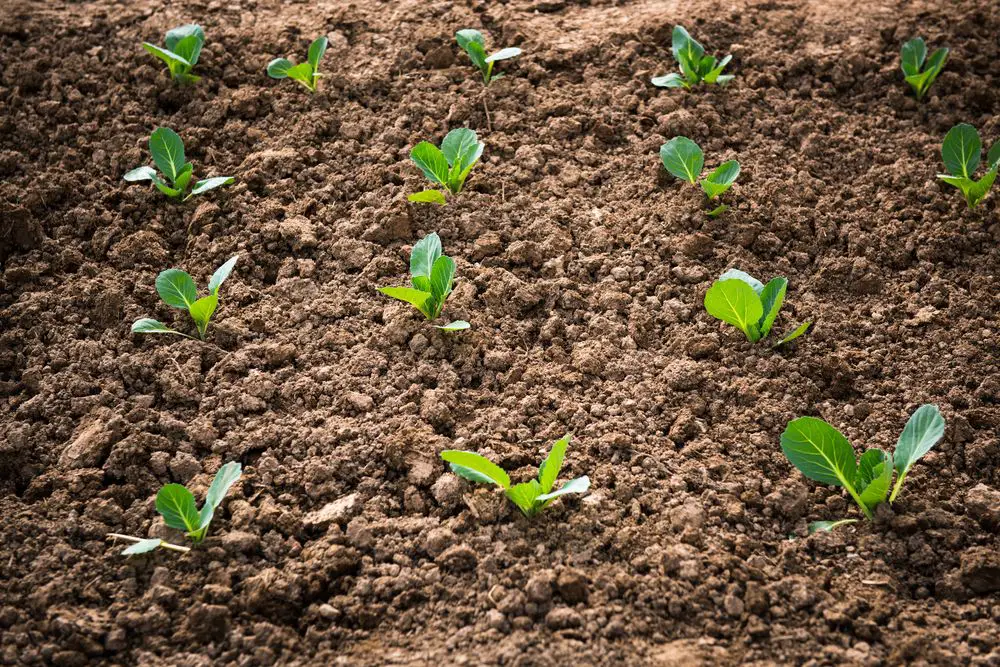Cabbage is one of the crowd pleasers when it comes to salad and other delicious meals. They are grown in cool-weather temperatures and are a huge part of every table of food the world over. High gastronomy or good old home cooked meals.
There are 8 growing stages of cabbages that they typically undergo to fully mature. The stages are cotyledons, seedling, true leaf, pre-cupping, cupping, head formation, head fill, and mature.

Cabbage Growing Stages
1. The Cotyledons Stage of Cabbage
This is the first stage of cabbage growth, and this process is basically the germination of cabbage seeds.
In this developmental stage, there are no true leaves present until certain conditions are met. Such conditions are adequate nutrients, temperature, moisture, and sunlight.
Moreover, this stage is the most crucial part of cabbage growth because it will determine whether or not the cabbage will survive.
In this stage, several problems are expected such as flea beetles causing small holes in the stems and even cutting them completely. Hence, the utmost care and close to perfect growing conditions should be maintained to avoid these problems.
Aside from flea beetles, diseases such as black leg or black rot are also possible to infect cotyledons.
It becomes challenging because they are hard to notice at this stage.
It goes without saying that the first stage of cabbage growth requires great attention and care to details.
2. The Seedling Stage of Cabbage
The next developmental stage for cabbage growth is seedling where it usually exhibits at least 5 true leaves.
This is the time they are ready for transplanting provided that all the conditions are met. If not, they might not develop in their perfect shape.
Equally important, this stage is also susceptible to pest attacks. Flea beetle is still a problem during this stage and can cause damage to the seedling.
Also, this stage will begin to manifest the injuries the plant has incurred which were not visible in its previous stage.
An injury to the roots or hypocotyl region becomes visible and could be a potential cause of death of the seedling. Cabbage-worm larvae or diamond-back moths can also be found during this stage.
Lastly, symptoms of a black leg or black rot will begin to show up starting this stage as well as in the succeeding stages.
3. The True Leaf Stage of Cabbage
This stage is when the cabbage begins to form true leaves.
There are two phases during this stage:
Early true leaves: In early true leaves, the cabbage has 6-8 leaves
Late true leaves: In late true leaves, the cabbage has 9-12 leaves
In both phases, the base of the stem is still visible from above, but it will eventually be covered when the next stage happens.
Furthermore, the early true leaf will not be seriously affected by flea beetle feeding, but cabbage maggots can still cause potential damage to the root.
Nevertheless, they are already suited to strive for adverse growing conditions when transplanted compared to seedlings.
As for the late true leaf, flea beetle feeding will no longer be a problem at this stage and the succeeding stages because the cabbage has grown enough to withstand the damage.
Cabbage maggots will not pose a great risk because the root has been established already but certain control measures may be required to get rid of diamondback moth, imported cabbageworm, and cabbage looper.
4. The Pre-Cupping Stage of Cabbage
The pre-cupping stage is the time when the cabbage has about 13-19 leaves and will begin to conceal the base of both stem and leaves.
By the end of this stage, the base of the stem and leaves are completely concealed. They will get covered by the innermost leaves called the heart of the cabbage which will grow right in the middle in an upright fashion.
Moreover, this stage is not very susceptible to injury because the cabbage has established quite well.
However, they need to be protected during the early stages of the pre-cupping phase to protect from thrips injury.
The protection should stay until the end of the pre-cupping stage to minimize injuries.
5. The Cupping Stage of Cabbage
After the pre-cupping stage comes to the cupping stage wherein the cabbage will have approximately 20 to 26 leaves.
In this stage, the innermost leaves will be concealed by older and larger leaves. They will eventually become the frame of the leaves once the cabbage goes mature.
Moreover, thrips injury in this stage is no longer a problem because the leaves are already strong.
Pest infestation will also not be a problem as the cabbage is close to its maturity.
6. The Early Head Formation Stage of Cabbage
This stage begins to develop a ball of overlapping leaves in the middle of the innermost leaves.
It is called the head of the cabbage surrounded by bigger and older leaves acting like a frame. It will eventually unfold as the head continues to grow.
7. The Head Fill Stage of Cabbage
During this stage, a round firm ball of overlapping leaves is visible in the middle of the plant. However, it is not fully developed and therefore not ready for harvest.
This is the last stage before the cabbage matures.
8. The Mature Stage of Cabbage

The head will reach its maximum size and there will be no new leaves growing.
The ball of overlapping leaves is already in its perfect size and hardness and therefore ready for harvest.
But did you know that cabbages must undergo a series of changes before they become available in the market and eventually end up on our tables?
Change is common among plants and vegetables because that is part of their growth. In this segment, we will embark on the exciting growth stages of cabbages to know more about this wonderful vegetable.
Final Thoughts on the Cabbage Growing Stages
There are several stages a cabbage must pass through before it reaches maturity.
Now that you know those various stages of cabbage growth, you may well be inspired to grow your own or simply appreciate the beauty and simplicity of its growth.
Jenny Marie
Tribal Writer
Edited By
Patricia Godwin

